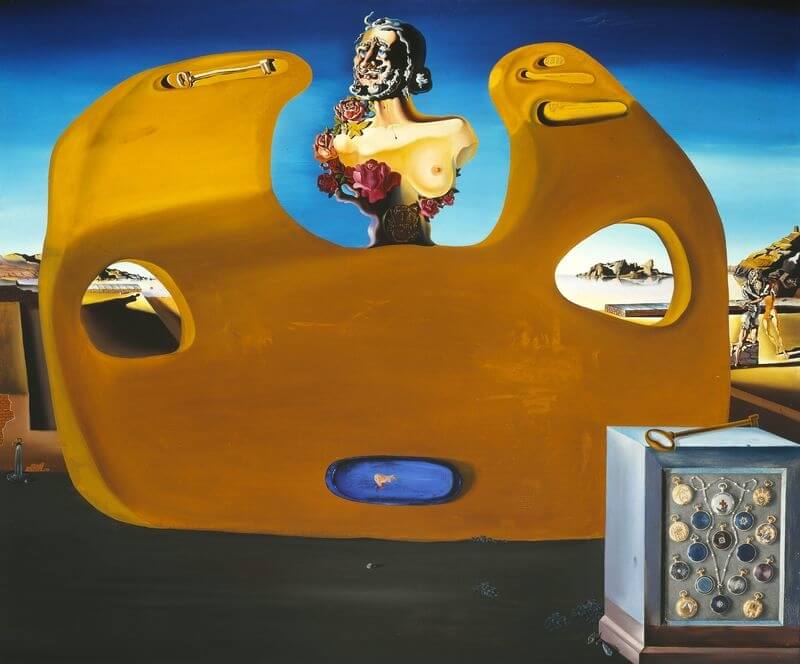Memory of the Child Woman, 1931 by Salvador Dali

This important painting of 1931, replete with Freudian symbolism, belongs to a series of works in which Dali interprets his estranged relations with his father through the myth of William Tell. Dali's adulterous affair in 1929 with Gala and his blasphemous inscription on The Sacred Heart deeply offended Dali's father, who promptly expelled his son from the family home. In protest, Dali shaved his head and buried his hair in the sand, a gesture that at once signaled paternal defiance and his recognition of the symbolic threat of castration that his exile represented. Over the next three years, Dali executed a series of paintings in which he attempted to exorcise his guilt and fear of paternal retribution by transferring his libidinal fantasies to Gala , the "child-woman", who subsumed Dali's desire to regress to a state of infantile sexuality and, in the process, symbolically freed him from Oedipal repression and moral censorship.
Signs of the Oedipal drama abound in Dali's great painting. The hermaphroditic bust that emerges from the biomorphic structure in the center recalls the mythical phallic mother, whose omnipotence, Sigmund Freud argued, the male child believes until the anxious moment of sexual identity formation, when he discovers the mother lacks a penis. According to Freud, the primal scene sets into motion a complex fantasy of castration for the young male child, who attempts to allay his fears through a process of recognition and disavowal of maternal difference.























